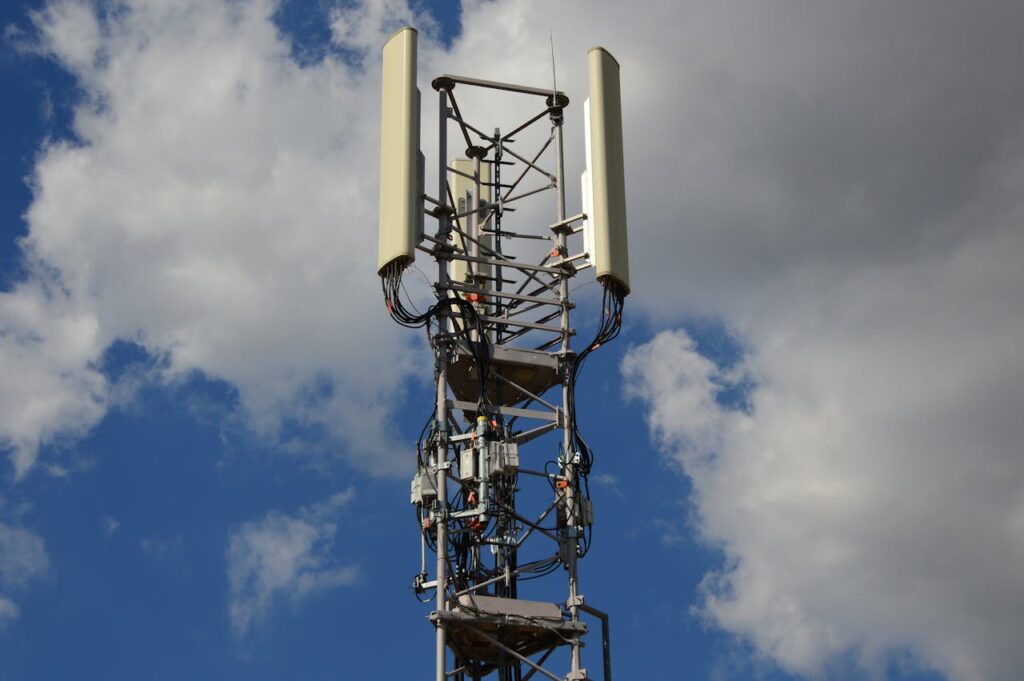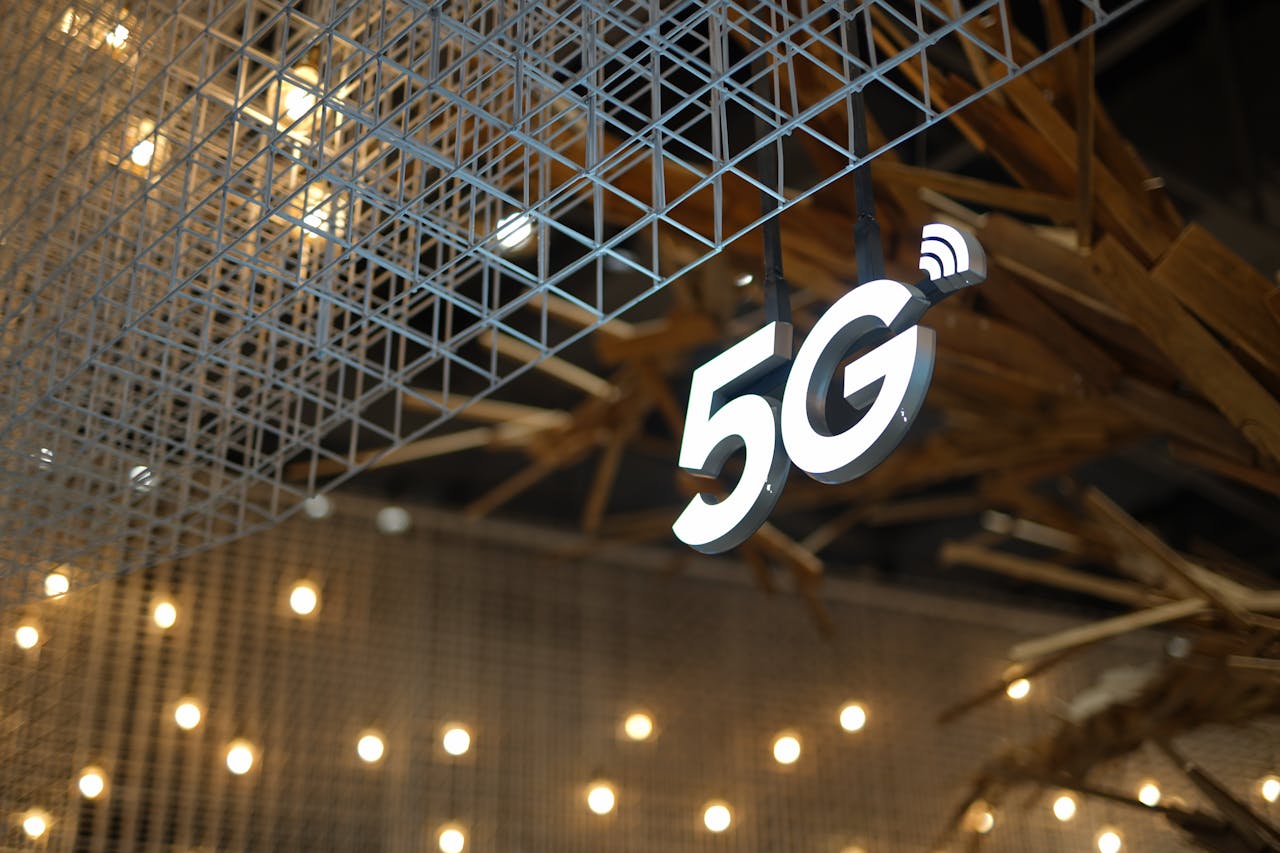5G Networks and Urban Development: Connecting Smart Cities Faster
5G technology transforms urban development by enhancing the performance of smart cities and their connectivity and sustainability.
The fast speeds of 5G networks together with minimal delays and huge device connectivity, become crucial components for developing the cities of tomorrow.
5G technology through its next-generation network speed, drives digital transformation for worldwide cities along with enabling improved infrastructure systems and stronger public safety measures.
This article investigates how 5G changes urban development while describing smart city solutions and details the barriers to implementation and potential future prospects for 5G urban environments.
How 5G is Transforming Urban Development
The next-generation mobile network brings more than speed improvements over 4G to urban territories because it functions as an entire urban development transformer.
Here’s how it’s transforming cities:
a. Ultra-Fast Connectivity for Smart Infrastructure
High-speed data transfer enabled by 5G constitutes a necessary condition for real-time infrastructure monitoring of urban facilities including:
- The traffic management system operates with intelligent lights which adapt their timing to measure the current road traffic density.
- The predictive maintenance system monitors roads and bridges alongside utilities.
- Buildings enabled by IoT technology function better by managing energy consumption.
b. Enhancing Public Safety and Emergency Response
5G technology provides ultra-fast response times through its minimal latency enabling emergency response organizations to deliver service more efficiently.
- Real-time video surveillance with AI-powered threat detection.
- Smart streetlights that alert authorities in case of accidents or unusual activities.
- Fast communication systems streamlining first responder operations to maximize crisis response coordination.
c. Revolutionizing Transportation with 5G
Through its implementation 5G technology enables a smoother operation of autonomous vehicles and smart public transportation systems.
- Real-time navigation including traffic updates depends on the 5G cellular network for self-driving cars.
- Connected public transportation achieves greater efficiency because it offers real-time route information plus automated payment systems.
- The development of drone delivery services is possible due to 5G’s ability to provide rapid and quick communication.
d. Enabling Smart Energy Grids
Cities implement intelligent energy management systems that use 5G technology for operation.
- Through efficient distribution of electricity additional power outages become a rarity.
- Internet of Things devices track energy usage at each moment.
- Cities possess better potential to integrate renewable energy sources including wind and solar between their power distribution networks.
5G and the Rise of Smart Cities
Any modern urban development control system depends on 5G because it delivers continuous network connection between all city operational domains.
a. Smart Homes and Buildings
- The technology of 5G enables residents to achieve wireless control of household appliances and lighting and ensure security measures through remote operation.
- Smart offices transform productivity along with decreasing power usage through 5G-powered IoT devices which drive their operations.
b. Healthcare and Telemedicine
- Medicine sees progress through remote surgery and real-time patient monitoring because 5G networks offer fast speed and low-latency processing capabilities.
- Health monitoring wearables captured by individuals provide metrics to their doctors through emergency alerts.
- The ability to deliver AI diagnosis combined with telemedicine solutions extends healthcare reach to urban populations.
c. Enhanced City Services
- A system of smart waste management deploys sensors to deliver enhanced garbage collection routing which decreases environmental pollution.
- Five-generation public Wi-Fi connects users to the internet smoothly in urban centers.
- Using computational planning as a guide allows official institutions to base their decisions about city growth on data.

Challenges in Implementing 5G in Urban Areas
The implementation of 5G technology encounters multiple hurdles in urban areas because of several factors.
a. Infrastructure and Deployment Costs
- A complete 5G deployment demands dense networks built from small cell towers that need additional installations of towers and fiber connectivity points.
- Upgrade costs for existing infrastructure are expensive because they demand substantial investments among government sectors and private businesses.
b. Data Security and Privacy Concerns
- More devices connected to the network generate substantial security challenges which expose people to greater data breach danger.
- The protection of personal information for city residents requires cities to implement advanced security measures.
c. Regulatory and Spectrum Allocation Issues
- The successful deployment of 5G requires governments to distribute appropriate bands within the spectrum.
- Customer installations of communication facilities face delays because of current placement laws at the local level.
d. Digital Divide and Accessibility
- The early release of 5G connectivity occurs within tech hubs but smaller towns together with low-income areas often experience delays for this technology.
- The development requires affordable 5G connectivity services that should reach every resident in order to achieve equal prosperity.
Different challenges exist yet telecom companies together with governments pursue plans to boost 5G rollout in order to deliver this transformative technology to smart cities.
The Future of 5G-Powered Smart Cities
Urban areas will witness additional revolutionary developments from the advancing 5G technology in the coming years.
The forthcoming exciting advancements will include:
a. Metaverse Incorporation in City Life
- Mobile systems constructed with 5G competencies will generate life-like augmented and computer-generated reality environments throughout smart cities.
- Modern urban planning will undergo fundamental change through the development of virtual tourism and digital city models.
b. Green and Sustainable Smart Cities
Through optimized energy consumption 5G technology will decrease the carbon emissions produced by urban environments.
AI-powered energy management together with smart grids will lead to better sustainability outcomes.
c. 6G and Beyond
- The advancement of technology through network generation will reach its peak with 6G that enables quantum computing together with automated systems for urban systems.
- The upcoming cities will evolve to align devices into fluid communication systems that synchronize with each other.
The confluence of 5G technology with AI and IoT and cloud computing systems will transform urban life by creating more secure and efficient and environmental-friendly cities.
Conclusion
The urban environment evolves through 5G networks which deliver speedier and more advanced and networked municipal districts.
The growth of infrastructure and advancing technologies will lead to enhanced smart city applications of 5G which will create better efficiency alongside enhanced sustainability alongside improved resident life quality.
Eligible urban projects will face obstacles but the path toward 5G-powered city development appears promising.
Through strategic investments and planning methods urban areas across the world will transform into their most intelligent digitally advanced form to date.
FAQs
1. What makes urban 5G deployment distinct from 4G-based urban development?
The 5G system operates at faster speeds with minimum delays and handles multiple connecting devices at once.
Its advanced connectivity capabilities make 5G excellent for implementing smart city features including self-driving vehicles and real-time monitoring systems together with smart grids even though 4G cannot support similar sophisticated applications.
2. What stands as the primary barrier to carrying out 5G deployments within cities?
City development struggles because of its expensive infrastructure costs coupled with cybersecurity threats and regulatory barriers and the need to provide equal 5G access especially to those living in disadvantaged districts.
Also read: The 15-Minute City Concept: Revolutionizing Urban Living

